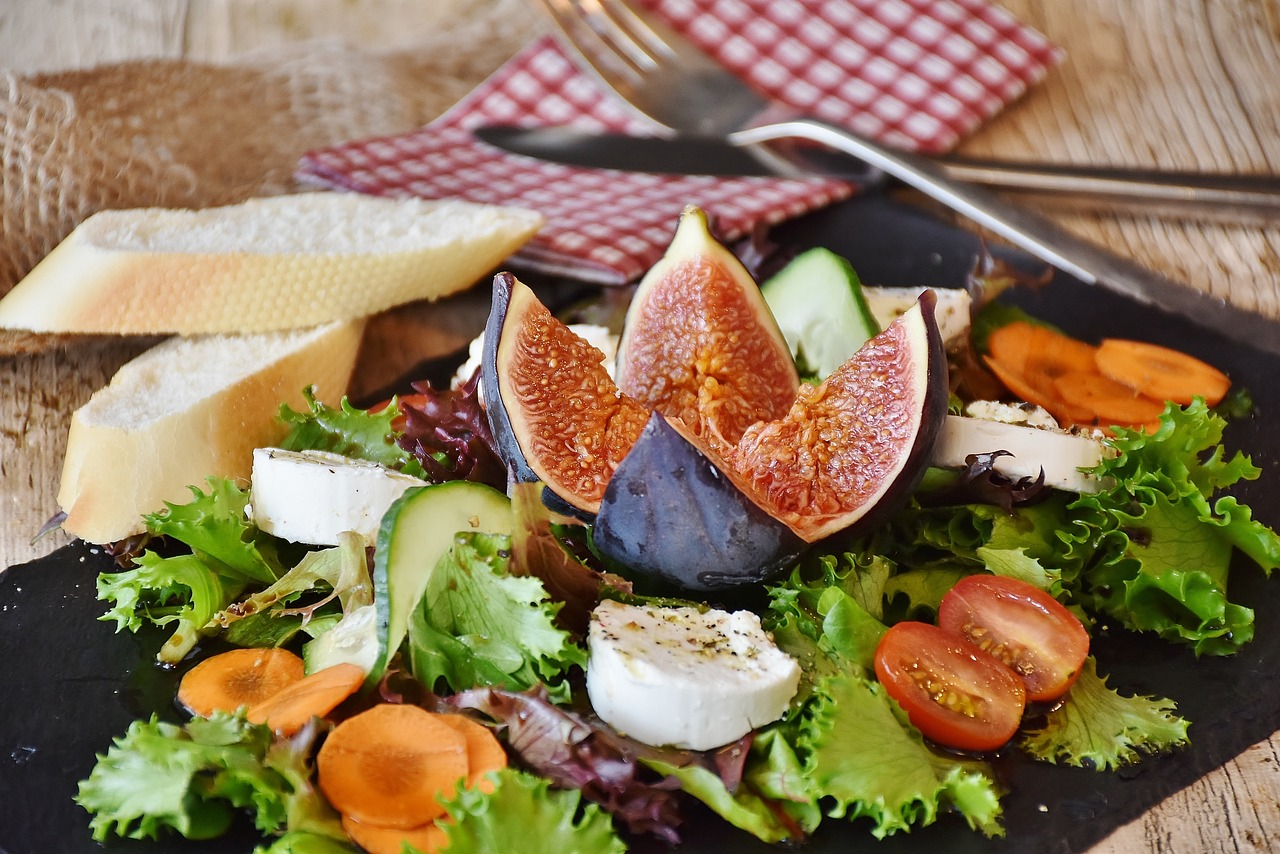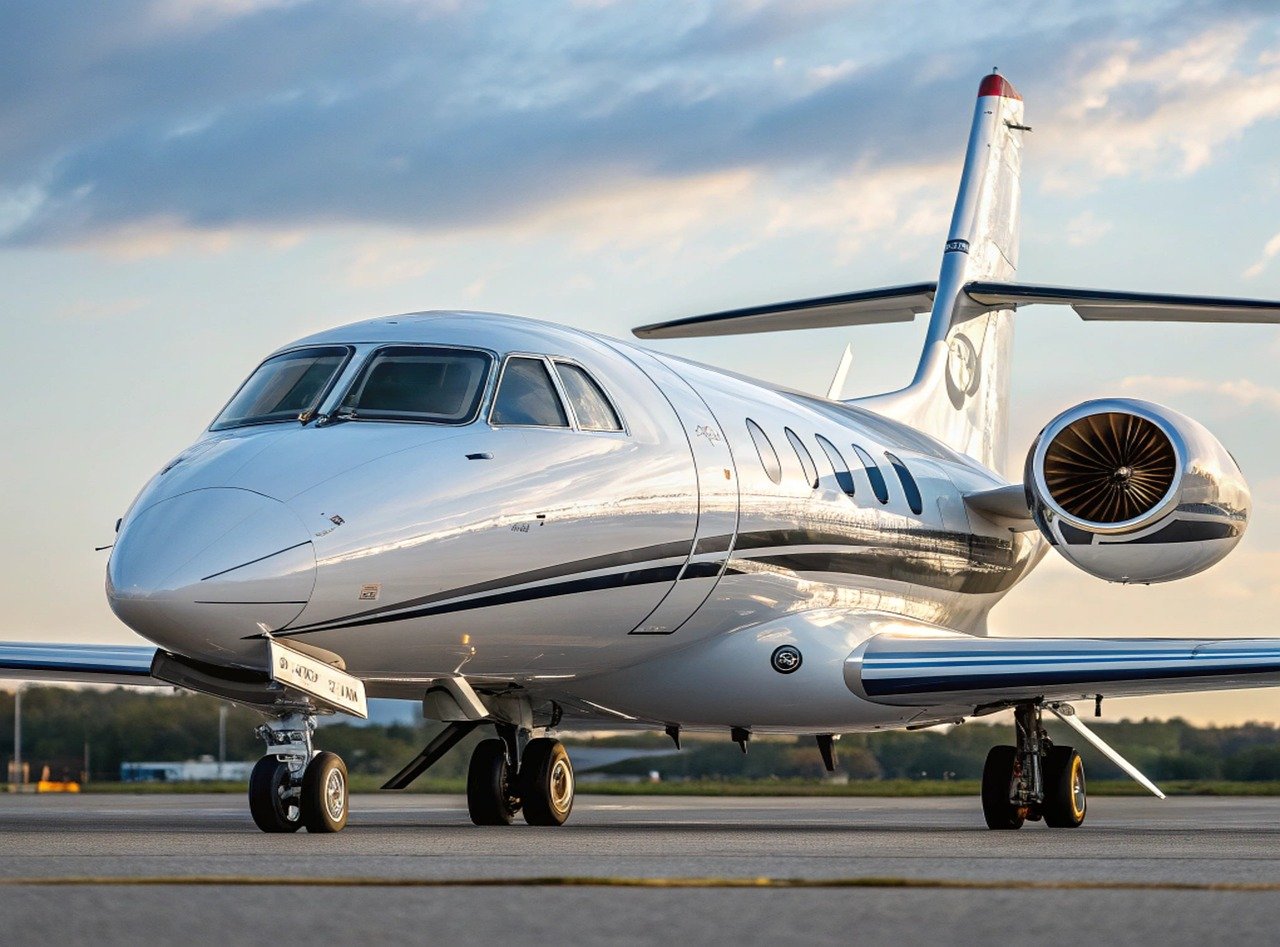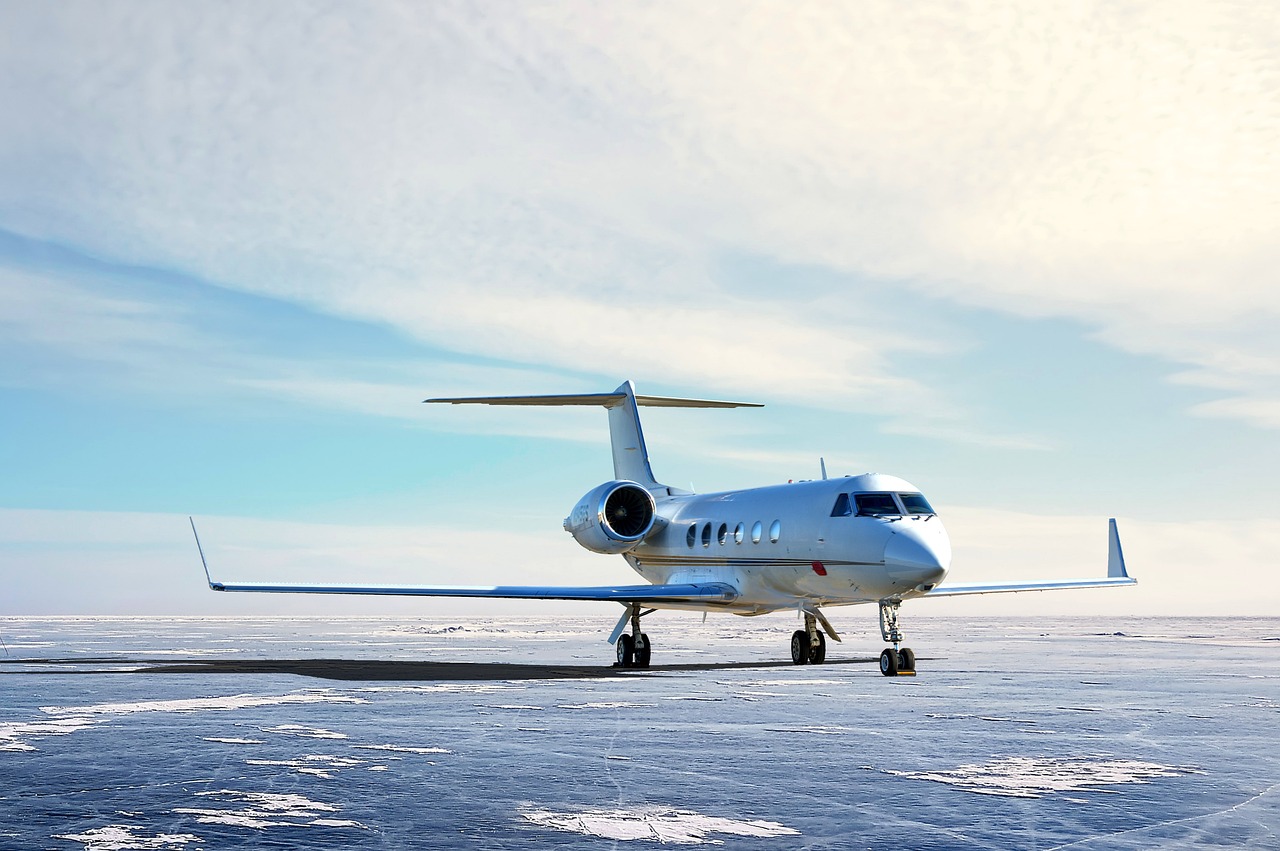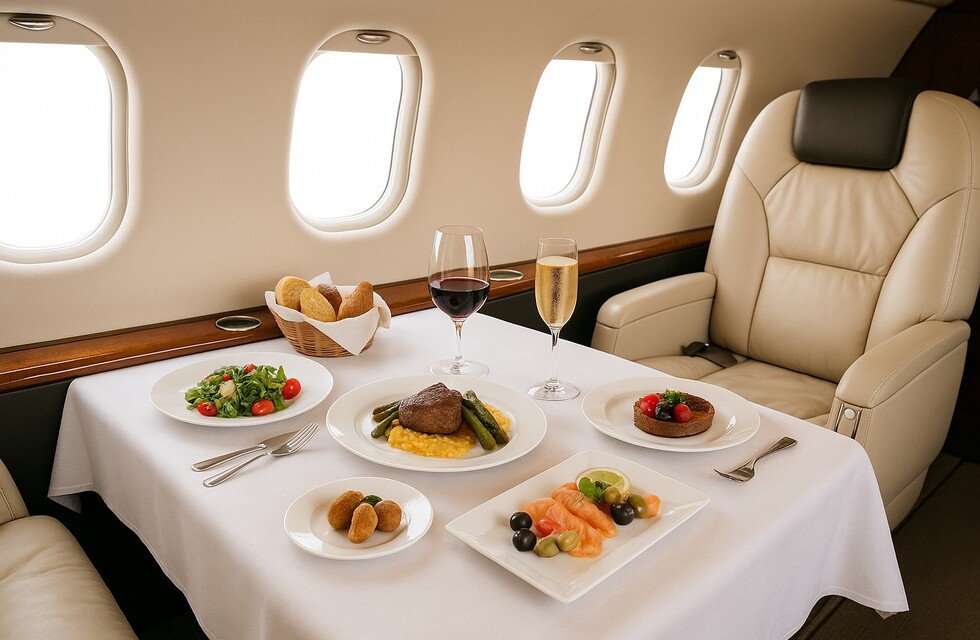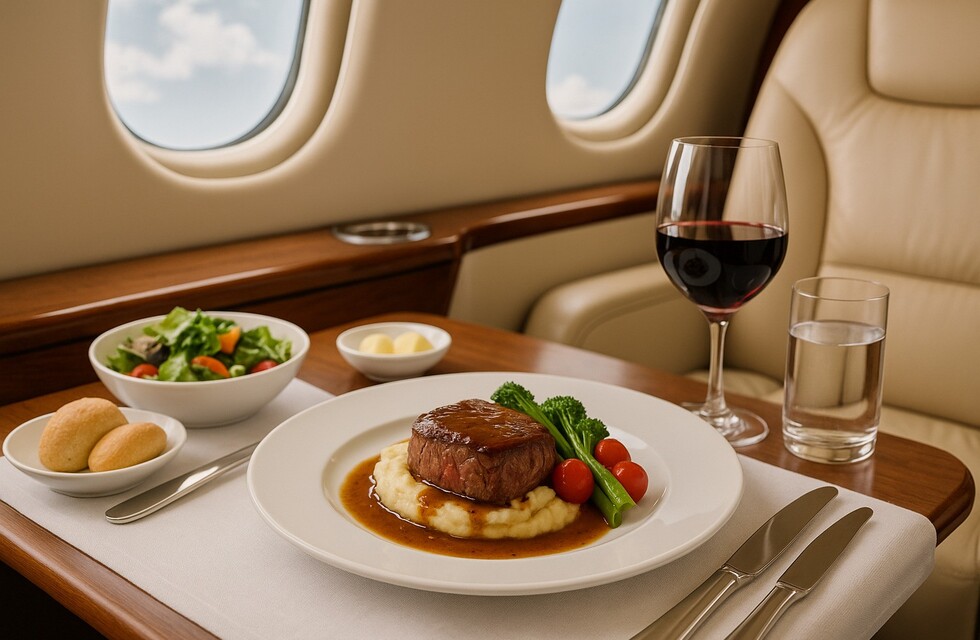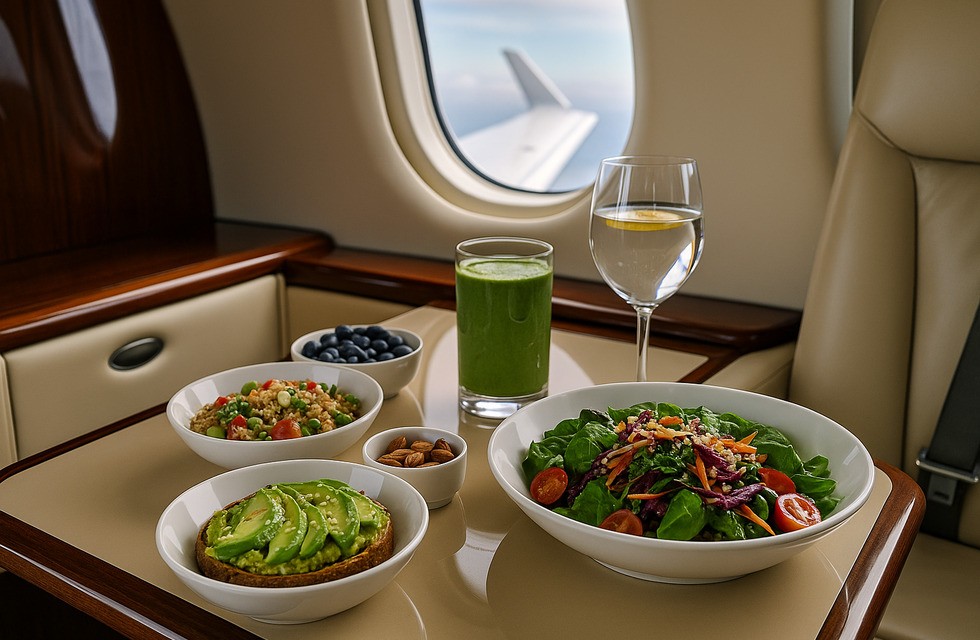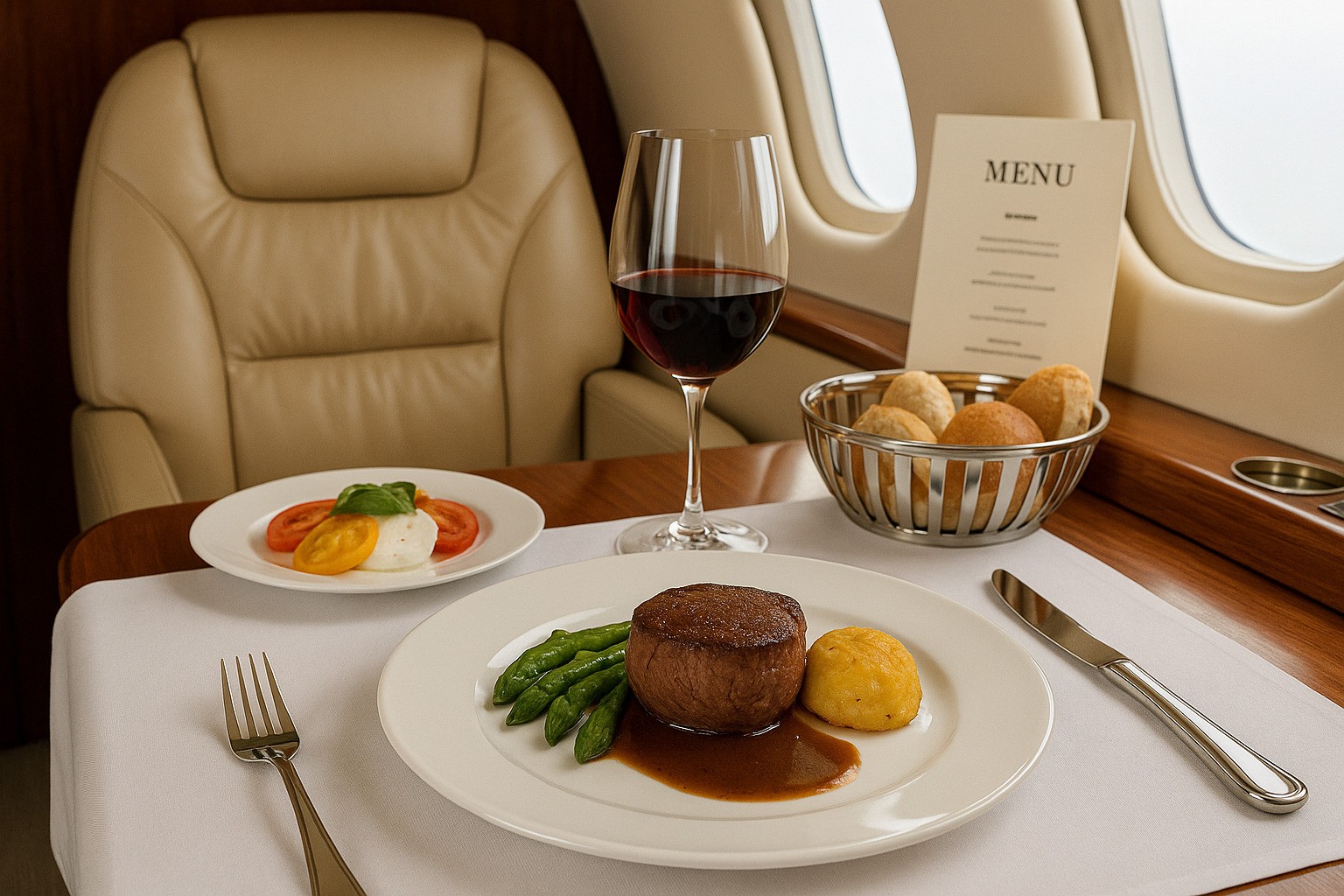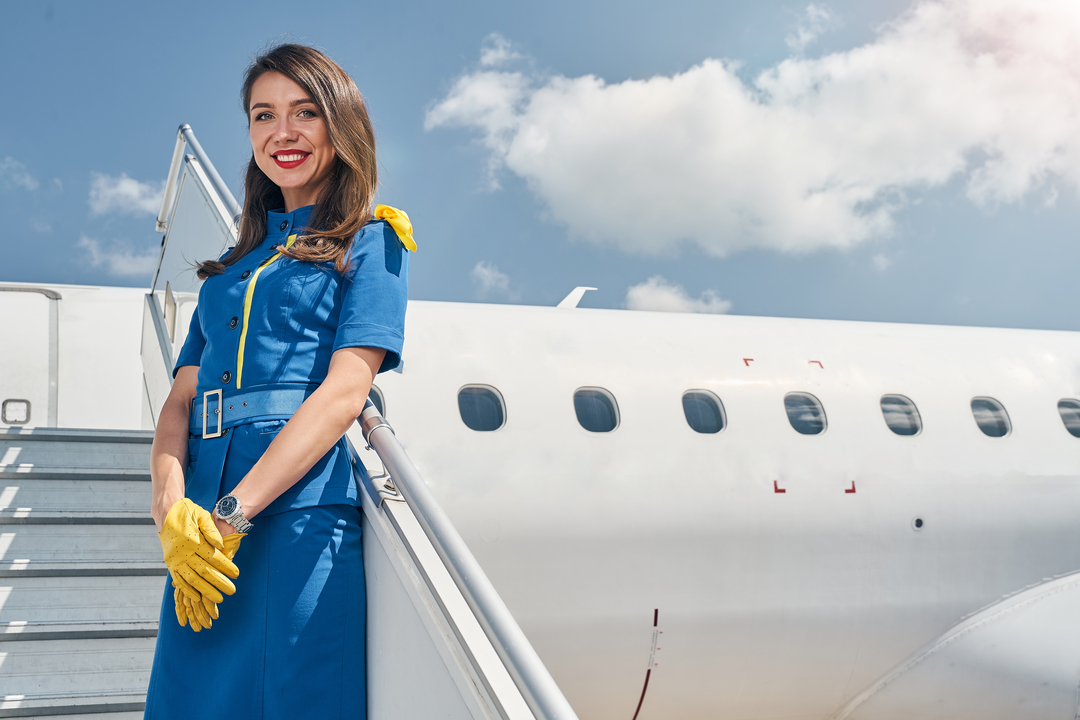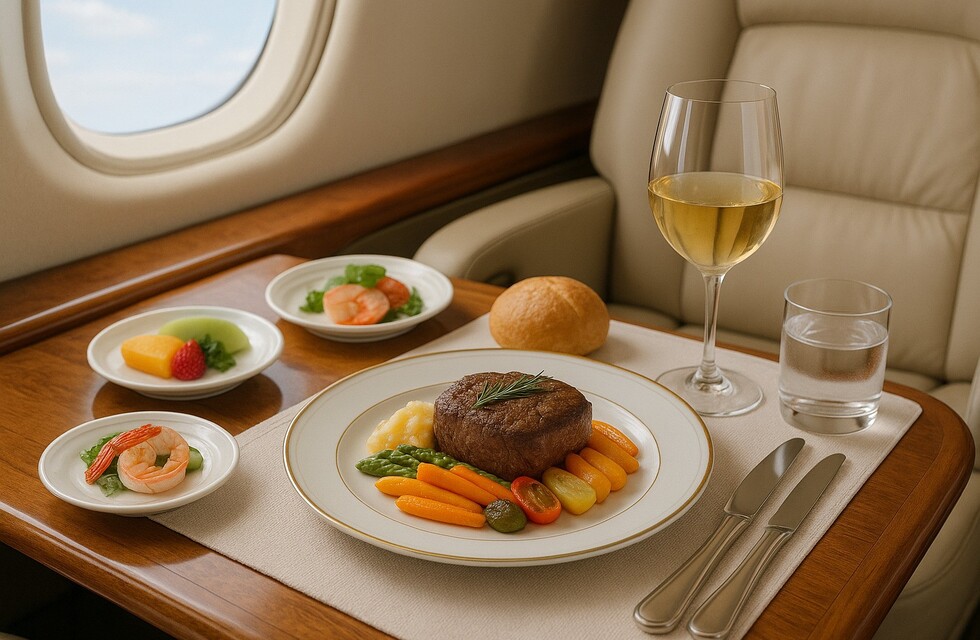If you think airplane food tastes bland, you are not alone! And it is not entirely the airline’s fault. When you fly, your sense of taste changes. At high altitudes, like when you are flying at 35,000 feet, your taste buds won’t work the same way they do on the ground. Simply put, both your sense of taste and smell get weaker up in the air.
This makes the food less salty and sweet. There are many factors that affect how food tastes on a plane. These include the dry air, cold temperatures, lower pressure and even the noise inside the cabin. All these things can change how we experience the flavor of food and drinks when flying.
That is why airlines are working hard to change their meals and even drinks like beer and tea to make them taste better at high altitudes. Continue reading the blog to learn what factors affect the taste of food at high altitudes and how airlines overcome these challenges in inflight catering!
Dryness and low-pressure
When you board a plane, the air inside the cabin affects your sense of smell right away. As the plane goes higher, the air pressure drops and the humidity inside the cabin becomes very low. At around 30,000 feet, the air is drier than many deserts, with humidity levels dropping below 12%.
This dry and low-pressure environment makes your taste buds less sensitive to sweet and salty flavors by about 30%. While our sense of sweetness and saltiness decreases on a plane, our ability to taste sour, spicy and bitter flavors is almost unchanged.
But it is not just our taste buds that are affected. Around 80% of what we perceive as taste actually comes from our sense of smell. In the dry cabin air, our smell receptors do not work properly, which, in turn, makes food taste much blander.
While we usually think of taste as being related to our nose and mouth, psychologists are discovering that our ears can affect it too. When people eat with loud background noise, they rate food as less salty and sweet compared to eating in silence. Surprisingly, the food also seems crunchier in noisy environments.
However, the loud noise on a plane does not affect all tastes the same way. Spices like lemongrass, curry and cardamom taste stronger in the air, while salt and sugar do not have the safe effect.
Mass-produced recipes
Making tasty food for hundreds of passengers in the air is challenging. All meals must be cooked on the ground, packed, chilled and then reheated on the plane. Reheating is done with convection ovens, as microwaves and open flames are not allowed.
This process also changes the flavor of the food. Airline chefs must design meals that can withstand this journey.
Simulated cabin
Airline meals require different recipes than those used on the ground due to the challenges of high altitudes. While first and business-class meals are carefully adapted to taste great, coach meals are often simpler.
Inflight chefs use executive chefs and restaurant-quality kitchens to prepare meals, which are then chilled and reheated on the plane without overcooking. Some airlines also work with in-flight catering providers to test meals in simulated low-pressure conditions. It helps them improve the taste of food served at high altitudes.
So, now the question is how do airlines deal with this and maintain the flavors of inflight meals? It is a tricky challenge.
Adjusting the menu for the skies
Airline chefs try to adjust meals for the conditions on planes, but it is not an easy task. For example, the taste of salt and sugar is weaker at high altitudes, but adding more salt or sugar can dry out passengers. Although there is no exact recipe for boosting flavor, chefs definitely keep this in mind when preparing meals.
To make food taste better, airlines have to add more seasoning, spices and salt than a typical restaurant would. This extra seasoning is very important to make sure the food tastes good in the air.
They also know that at high altitudes, only one flavor–umami. The savory taste found in foods like cheese and mushrooms–becomes stronger, though the reasons for this are not fully understood.
In other words, flavors like curry, garlic, ginger and umami-rich ingredients such as seaweed, mushrooms and cheese tend to do better at high altitudes. These ingredients add depth and richness to dishes and help improve the overall taste of in-flight meals. That is why many airlines use umami ingredients to enhance meals.
Some airlines use sous-vide cooking, where food is sealed in plastic and cooked at low temperatures to improve taste. Furthermore, airlines are now testing meals in pressurized environments or on actual planes to better mimic the in-flight experience.
Also Read: Essential Guide to Private Jet Catering: Ensuring Food Safety and Quality
Drinks above the clouds
Drinks can also taste different at high altitudes. Some wines that taste great on the ground may not be as enjoyable at high altitudes. Wines can taste thinner, more acidic and less fruity due to changes in atmospheric pressure. To avoid this, airlines have worked to make beverages that taste good on planes by choosing wines with low acid and tannin.
However, champagne and Bordeaux, which many passengers prefer, can be problematic because they are high in acid or tannin. Wine experts recommend drinking wine earlier in the flight, as low humidity can make taste buds less effective as you dry out during the journey.
Some wines taste better on planes than others, especially those from countries like Chile, where grapes are grown at high altitudes. However, experts suggest avoiding Champagne while flying because the cabin pressure makes it lose its bubbles quickly.
Further Read: In-Flight Catering: Things To Consider When Choosing Inflight Catering Services

